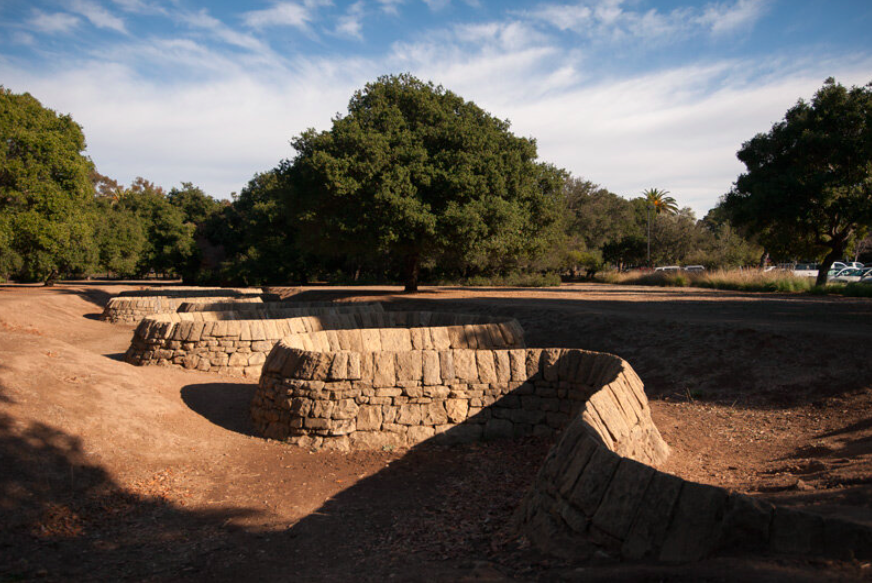RIVER OF STONES: ENVIRONMENTAL ARTIST ANDY GOLDSWORTHY
Stone River in front of the Aspen Institute Doerr Hosier Center. Photo: Photo: Jesse Chehak
QuarryHouse is a great admirer of renowned British environmental artist Andy Goldsworthy and his site-specific installations that weave ice, snow, leaves, branches, or rocks into the shifting landscape. In 2007 Goldsworthy created "Stone River" for the Aspen Institute Doerr Hosier Center. The serpentine wall composed of red sandstone from conflict areas winds its way through the exterior and interior of the complex. For the project, QuarryHouse sourced stone from China and India that Goldsworthy incorporated into his monumental sculpture.
Andy Goldsworthy left, and architect Jeffrey Berkus working on Stone River. Photo: Mark Fox
Aspen Institute started in the 1950s as a nonpartisan think tank where world leaders and business executives could meet for interactive conferences and lectures. The Doerr Hosier Center, designed by architect Jeffrey Berkus, continues that tradition. Artistic polymath Herbert Bayer was responsible for the Bauhaus-influenced architecture of the main campus. To complement this, Berkus utilized concrete and composite steel as a framework for massive glass windows that showcases Aspen's dramatic topography. He juxtaposed the smooth, angular forms of the architectural materials with Goldsworthy's rough undulating wall.
Stone River at Stanford. Photo: L.A. Cicero
While tours are available of Doerr-Hosier Center, the San Franciso Bay Area is home to its own Goldsworthy's Stone River at Stanford's Cantor Arts Center. Unlike its younger Aspen sibling, this wall constructed in 2002 repurposed sandstone from Stanford University buildings destroyed in the 1906 and 1989 earthquakes. Measuring 320-foot-long with more than 6,500 stones, eight English and Scottish master stone wall craftsmen built the dry stone installation. Much of Goldsworthy's art is ephemeral made of ice, snow, leaves, or branches, but even Stone River reflects change as the brilliant Northern Californian light travels across the sculpture.
German filmmaker Thomas Riedelsheimer documented Goldsworthy's esoteric work in the 2001 film Rivers and Tides.



